Subway-to-the-Sea is a first step to transform and connect sterile sprawling Los Angeles with itself, communities experiencing their city among the masses.
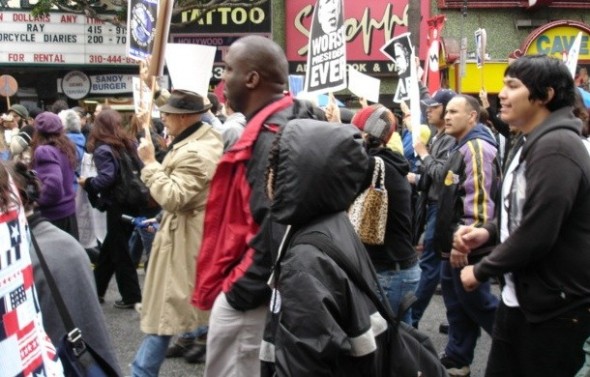

Community Re-Generation: Public Transit
By Jack Eidt
Subway-to-the-Sea, while requiring billions of dollars investment and years of construction dust and detours, never to quite solve traffic congestion, brings a much greater potential for Los Angeles: community-generator. Alternative transportation that cuts out the need for parking, forcing people to walk, can transform this unsustainable, fossil-fuel-addicted, disease-inducing polluted mega-metropolis from its sterile streetscape of cars, exhaust, and non-descript sidewalk-life. Walking, to know their city. To interface with their millions of unknown tattooed and nicely coiffed neighbors. To navigate with their senses, not GPS-directed, solitary-driven metal-boxes, humming to corporate-computer-generated easy-listening satellite radio transmissions.
There is no one solution to gridlocked-streets, freeway-congested, over-populated sprawling suburb-opoli. Consider that LA has few local parks, communal bikeways, little public gathering points, and is alien to the feet (or at least shoes) of the majority of its residents. Walking is something you have to drive to do. Elysian, Griffith, Santa Monica Beach, Topanga State all exist on the margins, freeway close, sigalert-breakdown-construction-detour-far-far-far. Downtown Artwalk provides the notion of walkable urban community, yet subway access remains limited; Third Street Promenade, named for its anomalous foot traffic-shopping-dining-experiment, necessitates an extensive parking scheme. No matter how many billions of transportation dollars are spent, short of a mass exodus to Utah for its Zion-like qualities, the multi-millions of us are not going anywhere, yet itching to walk somewhere.
We can, however, re-create our city. We can grow up, which signifies maturation as well as density, layered life to exist above and below, home-office-shop-park shared between us and them. Sharing a city takes work. LA has always been unshared, its mythos dependent upon cypress trees and palms, tropical hibiscus and a showering, whizzing, sprinkling thing that flows from some desertified, salt-encrusted, dried riverbed that we never have to see, but they are out there. The Owens wants its flow back, the Sacramento its fish, the Colorado its many other thirsty dependents. Fossil fuel combustion has made asthma ever-present, caused glaciers to melt, proliferated foreign wars of adventure. We build mass transit, they will come, and will have to walk to exit. Our neighbors will stroll to the station with us, we don’t have to talk, don’t even have to glance, but we’re there, together.
I know, it sounds trying. But with those neighbors comes events, music, friends, commerce, connection, caring, community, creating a better living environment. Yes it also brings noise, annoyance, invasion of privacy, forced respect, tolerance, acceptance, maybe even a dose of liberalism. It’s often a decent exchange. If you think not, there’s always moving near the new Wal-Mart on the highway to Zion. Promise to write a postcard and tell us about it, will ya?
The Subway-to-the-Sea is a multi-billion dollar baby-step, yet central to our sustainable future. It is a bloated project, subject to major cost overruns, will supplant funding for many other projects and regions, will cause significant impacts during the protracted construction phase, and will transform neighborhoods and lives. Not all changes will be good, but for once one might walk somewhere, then board a train that may not even be powered by oil, and be whisked somewhere else with more forced walking upon escape.
Those residents of high-rise condomania and apartmental “smart growth,” existing and planned along the way from downtown to the beach, may have a hope of actually getting out of their cars and into their neighborhoods at human-scale. If the subway is never built, those towers will exist as congestion-pollution-generating human-traps. A townhouse without a town is just an overcrowded apartment, lest we not forget. Part of town-making requires walkable public space, and engines of human gathering (offices, parks, shops, restaurants, neighbors), which can be served with train stations. Parking lots need not apply.
Beyond the Purple Line we need further personal-raid-transportation-technology modalities, seen occasionally in forward-thinking European capitals, to connect neighborhoods not walking distance from the train station. We should fund and support short- and long-distance, lane-dedicated, bus rapid transit. We also need continued freeway optimization. Surface street signalization will allow for faster cross-region non-freeway commuting. We need to draw the neighbors on the periphery into the center by extending light rail lines and high occupancy vehicle lanes. There is no one-solution, only multi-modalism for the multiculti-ism. Perfection is never an option when it comes to eight or twenty million of us looking to get to work on time. But maybe we can learn to say hello along the way.
________________________
Connection Disconnect
The movement for a public, mass-transit-served city is resisted by those still tied to a suburban, car-centric ethos.
By Christopher Hawthorne
Published in: Los Angeles Times
October 24, 2010
Someday, maybe, Los Angeles will come into its own as a post-suburban city, fully comfortable with density and multifamily housing and the coexistence of private cars, pedestrians, cyclists and mass transit. Clearly, though, that day remains a long way off, even if we continue to see tantalizing glimpses of how a more public, better-connected L.A. might look.
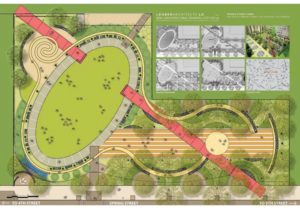

Consider the wildly contradictory evidence of the last few weeks. On Oct. 10, an estimated 100,000 Angelenos, on foot and on their bikes and skateboards, filled the streets to celebrate CicLAvia, which was modeled on a similar event in Bogota, Colombia, and, for most of a Sunday, closed more than 7 miles of L.A.’s boulevards to cars. The event drew many more participants than even its organizers were expecting, reflecting a growing constituency in Los Angeles for changes to the streetscape benefiting pedestrians and cyclists.
The Metropolitan Transportation Authority, meanwhile, continued to make significant progress on extending subway and light-rail lines across the region, even announcing a new federal loan of $546-million that will finally connect LAX to the Metro system. At the same time, Los Angeles and Santa Monica both advanced plans for new parks: on Spring Street in downtown L.A., where architect Michael Lehrer is designing a 35,000-square-foot pocket park, and in Santa Monica’s Civic Center, where the talented landscape architect James Corner is working with architect Frederick Fisher on a pair of adjacent parks totaling 7 acres.
Anyone who took those pieces of news to mean that L.A. is entirely ready to move beyond its car-loving, sprawling ways — and start paying real attention to the shared spaces of the city — was in for a rather harsh dose of reality, however. It came most clearly in the form of angry reaction to a draft version of an environmental impact report released by Metro for the planned Purple Line subway extension across the Westside.
The draft EIR was full of promising news for those of us who see subway lines to the Westside — whether that means the Purple Line or, a little farther to the south, the Exposition Line to Santa Monica by way of Culver City — as crucial elements, both practically and symbolically, in L.A.’s civic maturation. It indicated, for instance, that riding from downtown’s Union Station to Westwood would take roughly 25 minutes. (In bad car traffic, that trip can take three times as long.) Perhaps most important, the report was a reminder that much of the funding for an extension of the line from its current terminus at Wilshire Boulevard and Western Avenue to Westwood (or slightly farther west, to the Veterans Affairs campus) is already secured, thanks to sales-tax revenue from Measure R, which passed in November 2008 with 67 percent of the vote.
None of those details mattered to the subway’s most vocal opponents, however. They jumped on a single detail buried in the EIR: the admission by Metro that the subway would do little to alleviate traffic congestion on the Westside. For a number of pundits and writers, the traffic issue alone was enough to prompt them to renew their attacks on the Purple Line extension as a massive boondoggle.
In the LA Weekly, Patrick Range McDonald lined up source after source to condemn the Westside subway as “a giant public works project to please unions and special interests” and suggested that “county road-capacity projects put off for decades” might be a better use for Measure R money. Increasingly, he wrote, opponents of the subway are asking how Mayor Antonio Villaraigosa “can justify a subway that’s more PR icon than traffic relief project.”
Those complaints were echoed on a number of well-read websites around town, including Mark Lacter’s LA Biz Observed, part of Kevin Roderick’s LA Observed family of blogs. Calling the subway plan “nonsensical,” Lacter wrote, “You can’t expect taxpayers to shell out many billions of dollars and suffer through years and years of inconvenience for a public works project that will not improve their lives.”
I’m a fan of Lacter’s writing, but like many subway opponents he sees the issue of transit through an exceedingly narrow lens, assuming that the only plausible reason to build a line across the Westside is to make life easier for Angelenos driving around in their cars. For Lacter, McDonald and others, new mass transit will “improve their lives” only if it makes car traffic move measurably faster. Its only benefit is as a mechanism for “traffic relief.” It doesn’t seem to have occurred to either writer that anybody in Los Angeles will actually want to, you know, ride the new trains.
There are legitimate reasons to oppose the Westside subway, which comes with a staggering price tag. But the fact that it won’t improve traffic is not one of them. The large and enviable subway systems of the world — London’s, New York’s — were not built, and do not manage today, to substantially improve the flow of cars. Indeed, it’s worth remembering that virtually every city we think of as cosmopolitan and walkable, from Paris to Tokyo, also has terrible gridlock.
Car traffic in Los Angeles is going to continue to get worse as our population grows, even if we continue to widen roads and freeways, and whether or not we build more transit lines. What we need — desperately — are other mobility options, at the small scale of the bike lane and shaded sidewalk, the medium scale of the bus line and the major scale of the subway tunnel.
Nonetheless, the subway continues to operate as a symbol of anxiety-producing change. In the 1980s, when we first tried to build a subway across the Westside, a methane explosion under a Ross Dress for Less store on 3rd Street gave Rep. Henry Waxman and other politicians cover to help kill a transit project many of their constituents feared and loathed in equal measure. A quarter-century later, the subway still has the power to warp common sense.
Luckily, many Angelenos — particularly, it must be said, younger ones and ones who live some distance from certain subway-fearing precincts on the Westside — see the issue very differently. Many of them made a persuasive case in the comments section of McDonald’s LA Weekly piece, wondering why the paper — on other issues a consistently liberal voice — turns so conservative and obstructionist when it comes to transit, traffic and growth.
As one reader noted, “It’s ironic how this publication tries so hard to be urban and hip, yet at the same time seems to devote every other issue to bemoaning the fact that L.A. is losing its resemblance to a nondescript Midwestern burg. It often seems to me [its editors] should simply move, lock, stock, and barrel to Bakersfield or Fresno, since that seems to represent the kind of cityscape and infrastructure they want: no expensive rapid transit, and no tall buildings.”
Indeed, as that comment points out, attacks on mass transit and worries about creeping density are two sides of the same coin. Both are driven by fears that Los Angeles is losing the characteristics — easy private mobility, room to spread out — that have always made it, as a suburban metropolis, so different from other American big cities.
Take a recent flap over proposed town houses in Echo Park — and City Council President Eric Garcetti’s reaction to it. Garcetti is knowledgeable and thoughtful on issues related to density, growth, transit and park space. But like any L.A. public official, he remains vulnerable to the prevailing political winds, which often blow strongly against the idea of a denser city. Earlier this month, his office announced that it would not support construction of the controversial eight-unit project, which would be in Garcetti’s district.
The project, made possible by the city’s 6-year-old small-lot housing subdivision ordinance, would build eight town houses, each about 19 feet wide and 45 feet high. Critics in the neighborhood called that level of density unreasonable, and Garcetti agreed — a sign that L.A. to a large degree still sees itself as a single-family metropolis, a place where even three-story town houses can seem as threatening as skyscrapers.
More and more, I am convinced that the gap between those who welcome additional density and crave mass transit and those who are on guard against such change is widening, and indeed will come to define the political landscape in Los Angeles for the next decade or two. To a certain extent, CicLAvia and events like it have a role to play in helping bridge that gap, mostly because they provide a way to see the cityscape with fresh eyes and at unusually close range.
But they shouldn’t be confused with enlightened, permanent changes to the city, mass transit improvements chiefly among them. Those seem as tough to achieve as ever.
christopher.hawthorne@latimes.com
Copyright © 2010, Los Angeles Times




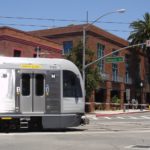
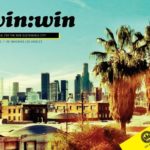
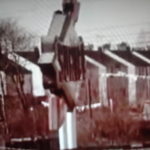
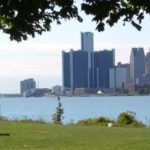






Nice!
(:
Pingback: Beverly Hills Subway And Downtown Regional Connector Considerations, Monrovia Maintenance Yard, Made In America Plan, Research Roundup & More | Transportations Blog